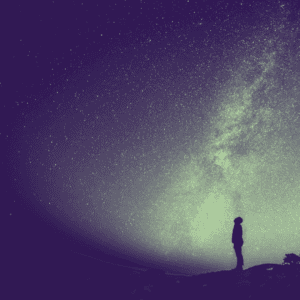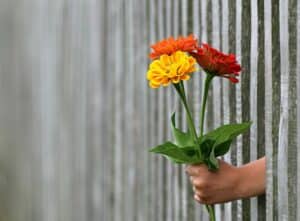Painter and narrative activist Robert Shetterly helps us find our heroes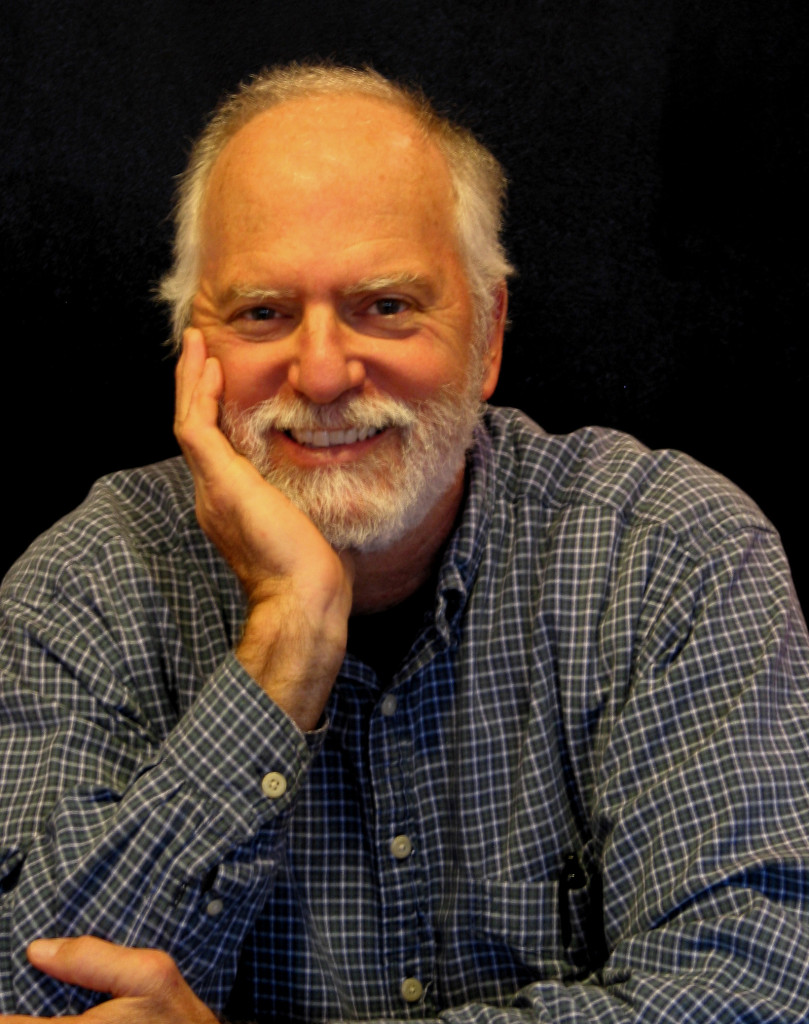
They are whistleblowers and lawyers, journalists and healers, peacemakers and pastors, teachers and muckrakers, artists and activists. Some are familiar luminaries—James Baldwin, Eleanor Roosevelt, Woody Guthrie, Sojourner Truth. Others are more obscure—abolitionist/freewoman Elizabeth Mumbet Freeman; advocate for the homeless and anti-death penalty activist Murphy Davis; musician and storyteller Reggie Harris; war correspondent Chris Hedges. Discovering these new faces and stories is as delightful as spotting a previously undetected star in the night sky.
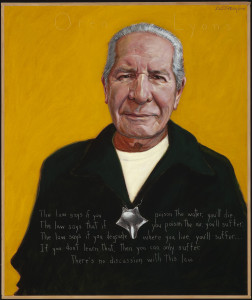
Robert Shetterly is dedicated to helping this country tell new stories about itself, true stories about real people that give us something to aspire to and that demonstrate the good we are capable of as a people.
Inspired by a statement by Frederick Douglass—“Find out what any people will quietly submit to and you have found out the exact measure of injustice and wrong that will be imposed on them”—Shetterly began to seek out the folks who have refused to submit quietly to injustice.
“The truth-tellers can help us,” he says, “but we have to know their stories.” So in 2002 he started to paint their portraits, aiming for 50 initially but becoming so swept up in the project that the tally now stands at 199 and counting. When the collection is complete, Shetterly plans to donate it in its entirety to an institution that will continue to use the portraits for education and assist in creating traveling exhibits to schools, colleges, museums, and the like in order to inspire people to act for the common good.
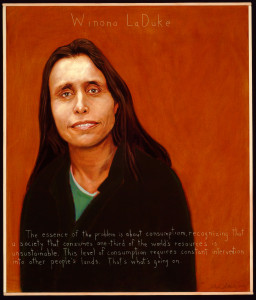
We spoke with Shetterly about what motivates this ongoing celebration of America’s true heroes and about the education he’s gotten along the way.
How did you come to this project?
Robert Shetterly: I came reluctantly to this project. I had a successful career as an artist when, right after 9/11, the Bush administration began the rhetoric to enable the attack on Iraq. I was so angry at the blatant lying, fear, and propaganda, so full of grief for the potential victims of this war—on all sides—that I knew I had to either become a better citizen or leave the country. I also knew I could not use my anger and grief to continually obsess about the people whom I thought were causing so much damage to this country and its integrity. I had to use the energy of my anger in a positive way, in the service of love rather than hatred.
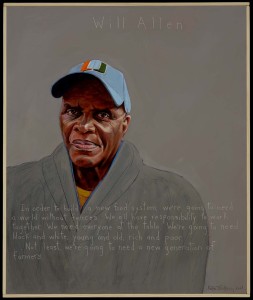
For my own emotional health, I decided to begin surrounding myself with people I admired rather than be oppressed by those I disliked. I did not dislike our values; I disliked the people who were mouthing them while doing the opposite. I despised the hypocrisy. I thought I needed to use the thing I do best—paint—to express how I feel. I often advise young people—well, all people—to find the intersection of the thing they do best with their deepest emotions and then do that. So, I did.
Besides telling the truth, what are some other commonalities or shared character traits in your subjects?
Shetterly: The great religious leader and political activist William Sloane Coffin once said, “Without courage there are no other virtues.” It takes courage to tell the truth. It takes courage to act out your compassion. It takes courage to demand justice. And it takes perseverance to actually make change. So courage and perseverance are necessary traits of my subjects. Equally important is to be able to recognize the truth before one tries to articulate it. We are fed a constant diet of misinformation and half-truths. Most people allow themselves the comfort and conformity of accepting what they are fed because it asks nothing of them. It reinforces myth and prejudice. One of the great abilities of my subjects is to see what is really happening and call it by its true name.
Your subjects include Americans from across the centuries. How do you go about researching them?
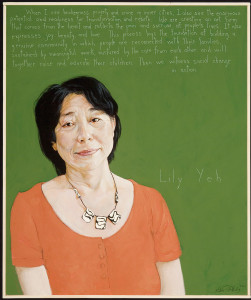
Shetterly: I try to meet all the living subjects. I want to see their faces, see how they talk, see the expression in their eyes. I also want to get to know them as people, because I’m going to be their advocate, an extension of their voice.
I spend more time researching than I do painting—reading books, interviews, histories, biographies. One of the most amazing parts of this project for me has been the virtually vertical learning curve. I have to be able to talk about each person I’ve painted.
What have you learned from this project?
Shetterly: I have learned so much from this project—I’m sure far more than I realize. But I would like to mention one thing I’ve learned that is important for all of us as citizens—citizens not just of this country but of the world. The institutions that we trumpet to the rest of the world that supposedly make us the “greatest democracy on earth” are largely corrupt. They have been controlled by a powerful status quo for its own benefit. They have failed the notion of democracy, or, more accurately, they have subverted the idea of democracy. But this is not new. It was not the Constitution and the Declaration of Independence that gave women the right to vote, or ended child labor, or won an eight-hour work day, or ended Jim Crow, or changed environmental laws—on and on. It was people with the courage to insist that the values of those documents be made real for them. Democracy and freedom are never written into law successfully. They always depend on the spirit of people with the courage to demand them.
How do you select your subjects?
Shetterly: Selecting is hard. There are so many people I could have/should have painted—all equally deserving. But I have to make choices, often based on what I feel is a good story to tell others to inspire them. The hardest part of choosing is choosing whom not to paint. That hurts.
Which of your subjects have most moved, challenged, influenced you?
Shetterly: That’s tough. They all have. They all challenge me to do more, to not give up, to withstand criticism. Many of them have become good friends and have asked me to work with them. With the extraordinary activist artist Lily Yeh I went to work in a village of survivors of the Rwandan genocide. We continue to work together. I often team-teach with some of them—like Terry Tempest Williams or Zoe Weil.
But my subjects from the past challenge me just as much. When I need strength to stand up to power, I turn to Frederick Douglass and read his great speeches.
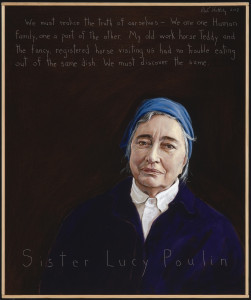
What do you hope the project will achieve?
Shetterly: I hope that people will be inspired by the example of the people I’ve painted, that they will take them as role models. Our popular culture offers us celebrity role models, sports heroes, the super-rich—people who demand nothing from us but admiration and passivity. If we desire to live peacefully and equitably on a sustainable planet, we will have to fulfill our obligations as citizens, not our obligations as entitled consumers. We all know, I think, that we are at a very crucial point in our history. Our leaders are not solving the problems, whether they be about peace, energy, climate change, or economy. It’s up to us. I want to help with some examples of how to do it.
Grace Lee Boggs, the great community organizer from Detroit, says, “In order to restore America we need to re-story America.” The Americans Who tell the Truth project means to be a part of that re-storying. We call what we do “narrative activism.” If we don’t tell ourselves the right stories, the stories that empower us, if we don’t tell ourselves the stories that tell the truth of who we really are as a people, we don’t know who we are. If we don’t know who we are, we can commit any atrocity in the present or against the future and have it fit into a dangerous and self-congratulatory myth.
What motivates you to tell the truth? To do your art? To share these portraits?
Shetterly: I see the glory of living in harmony with nature, of living in community, of living with courage, of living in peace, of living without hypocrisy, of living with respect for all people, of living with freedom, of sharing, of living for spiritual values and not the accumulation of wealth, of acting out of love and not suspicion and hatred. I want those things for all people.
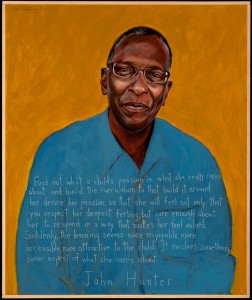
I have a grandchild. I imagine that everyone else’s grandchild is mine, and mine theirs.
See the whole collection and read the stories of the truth-tellers featured here at AmericansWhoTelltheTruth.org. The site also offers lesson plans and other useful resources for educators.

